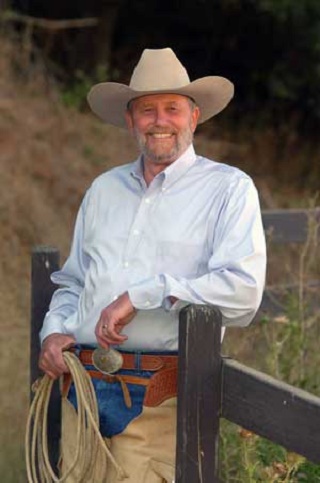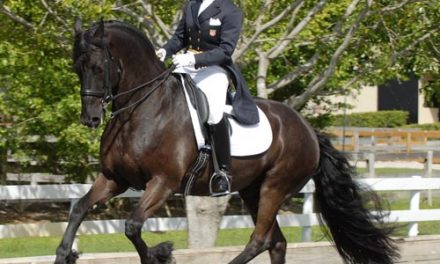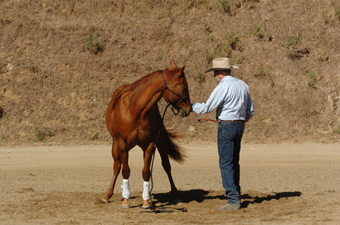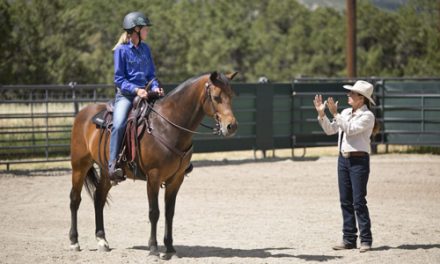 A horse that goes out on the trail should be one of the most well-trained horses because the horse is out in the open. Deer may pop up, even small animals scurrying through the brush may be disconcerting. Then you have walkers and bicyclists who may appear quickly and may or may not be courteous fellow travelers. I believe a good trail horse should be a horse that works well in the arena and a horse that is worked in the arena should also be a good trail horse.
A horse that goes out on the trail should be one of the most well-trained horses because the horse is out in the open. Deer may pop up, even small animals scurrying through the brush may be disconcerting. Then you have walkers and bicyclists who may appear quickly and may or may not be courteous fellow travelers. I believe a good trail horse should be a horse that works well in the arena and a horse that is worked in the arena should also be a good trail horse.
A good deal of preparation is needed before a horse should be taken out on the trail. Remembering that I have worked with many novice riders and problem horses for close to 25 years now, I have to say that many problems on the trail are caused because the horses are not mentally or emotionally ready to go out on the trail. A horse must be emotionally sound to be safe on a trail. That is the first consideration. A horse that is concerned about leaving a buddy in the pasture or barn will call, carry on and be difficult to handle. This is a buddy-sour horse and he will not be attentive or responsive to his rider. The horse may rear or buck because he is not emotionally ready to leave his comfort zone. That type of behavior must be dealt with before taking that horse out onto the trail. If your horse is buddy sour, take the him out alone a short distance and bring him back. Increase the distance as his comfort level increases. This may need to be repeated over a period of days or weeks.
Another issue is barn sourness. When a horse is most often ridden around the barn or in the arena, he may be uncomfortable leaving the immediate area. The further you try to get him away from the barn, the more concerned he becomes and the harder he is to handle. The other aspect of this is that once out on the trail, when you start home, the horse will want to trot or even run home. He will pull on the bit and fight any effort to slow him down. When we pull on the reins to slow the horse, he shortens his steps. We call this jigging on the trail. It is uncomfortable and unsafe for the rider. That type of behavior must be dealt with before you go on a long ride. Horses like this may react at 500 feet away from the barn as well as five miles. It is best to work with the horse at 500 feet because there is less anxiety. Again, go out a short distance and bring the horse back, gradually lengthening the distance as the anxiety lessens. Again, this may take many lessons.
There are some skills that both a horse and rider must have to be safe on the trail. Here are some physical exercises that will help your horse be safe on the trail. As a rider, you must be able to control your horse. Can you control the hips? Is your horse resistant and reluctant to yield? Are the neck and shoulders stiff? If so, work your horse to yield in these areas. (See my “Suppling and Riding Exercises” DVD.)
The horse must learn to follow his nose. When I ask my horse to go left by showing him with the inside rein, he must follow his nose to the left. His shoulders also must follow so it is necessary to have good control of the shoulders. This allows you to maneuver the horse when out on the trail. If the trail is partially blocked by a down tree, you need to be able to guide your horse around this type of obstacle. In order to maneuver on the trail or go over obstacles, a strong “go forward” cue is a must.
Another good exercise is backing. Your horse must be able to back up freely. Does your horse back up as if he were on skates or must you pull on the horse’s face? Does his head go up in the air, is he gaping his mouth? Does he drag his front feet? If the movement doesn’t feel pretty, it isn’t. The horse should move back smoothly and the head should be down.
These three very good basic exercises should take care of the physical training aspect. However, the emotions of the horse also need to be taken care of. There are many ways to prepare your horse mentally and emotionally. The horse needs to be thinking about you. When I ride a horse, I want to see the ears back on me and paying attention. Sometimes people misinterpret the ears being back. They think that means the horse doesn’t like something. But this is what I call business ears. This means the horse is paying attention and waiting for my next request.
We teach all the horses here at the ranch to drag and cross tarps and logs. We drape tarps on them and rattle and bang plastic bags around and over them. We use the big ball to get them used to things bumping into their legs. We teach the horses to go over poles and to carry the ball and the flag. These are all de-spooking exercises. Just because a horse does the exercise once, doesn’t mean he will always do it. The exercises must be repeated at intervals to maintain the comfort level of the horse. Periodically revisiting this type of training is essential for a safe trail horse. Depending on the horse, the exercises may need to be reviewed once a month or every six months. When the horse understands the exercises and you are out on the trail, you will have control of the feet and that means control of the horse.





